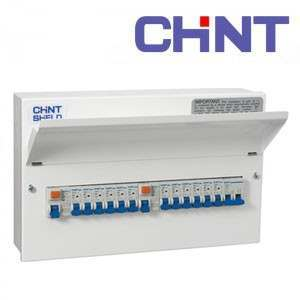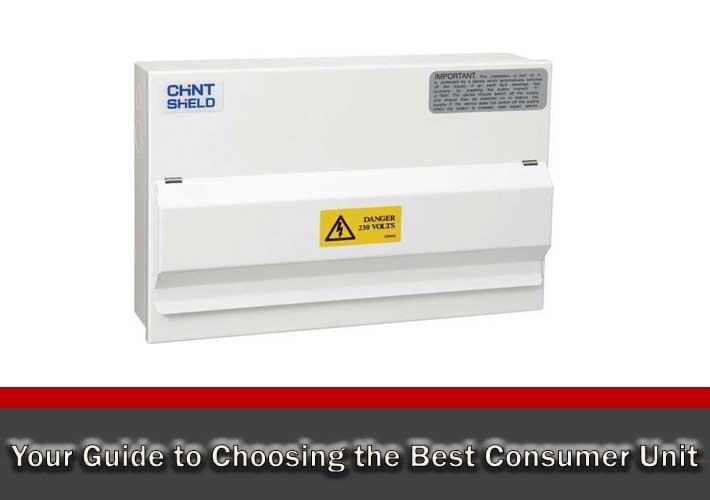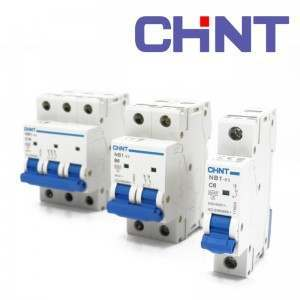Your Guide to Choosing the Best Consumer Unit
As you may already be aware, here at Expert Electrical, we have a panel of experts who are ready and willing to take your call and answer any and all questions you may have. This is one of our promises to our customers, and we are glad to say that we have been able to fulfill and keep this promise for years.
One of the aspects that we like to prioritise is answering our customers’ questions about certain products and their usefulness – such as consumer units as well as RCDs, circuit breakers, and RCBOs. If you have questions or concerns about the above-mentioned products, we’re here to give you the answers you need.
The basics on consumer units
 Almost every property which has an electric supply – which is most modern properties today – will have a consumer unit in order to distribute the proper amount of electricity to the different circuits in the property. A consumer unit has a number of important purposes, but one of its most essential purposes is to enable the use of a variety of circuits which can also be protected individually by a circuit breaker.
Almost every property which has an electric supply – which is most modern properties today – will have a consumer unit in order to distribute the proper amount of electricity to the different circuits in the property. A consumer unit has a number of important purposes, but one of its most essential purposes is to enable the use of a variety of circuits which can also be protected individually by a circuit breaker.
For instance, your property can have a separate electricity supply for the upstairs area and the downstairs area, and your property can even have a separate electricity supply for the outdoors or for its exteriors. This is where the importance of a consumer unit comes in, because it allows different circuits to be used for these electricity supplies.
The consumer unit is basically the central distribution hub for your electricity supply – it supplies the essential wiring system for whatever electrical sources you may have in your property, building, or household, which normally includes lighting, plugs and sockets, and so on.
The modern use of consumer units
When they first came out, consumer units originally housed electrical fuses and were also known by the name ‘fuse boards.’ But today, things are a bit different in that miniature circuit breakers (also referred to as MCBs) have significantly replaced the original fuses. So if there is ever an electrical overload, the miniature circuit breaker (MCB) can be easily reset by you or anyone with a simple flick of the switch. A fuse, however, would have to be replaced (it should be taken out first, of course) by a professional, and the professional should also be in charge of rewiring it. In certain cases, this can cost a bit of expense. But MCBs and circuit breakers fulfill an important purpose, particularly when it comes to protecting your property or household from fires and other accidents.
Another purpose for a circuit breaker would be for the disconnection of the supply of electricity, which allows you or someone else to safely and easily change or replace a light bulb, replace a switch or plug socket, and more.
Ensuring safety for your property
If you would like your property’s safety to be further enhanced with the proper circuit protection, you can make use of a safety device which you can use for the disconnection of electricity. This is particularly useful if there is an actual imbalance or disparity in the current of electricity.
The safety device we are speaking about is called a residual current device, also known as an RCD. This special safety device can provide you and your property with an extra layer of protection because it has the ability to trip out in a much faster manner compared to the normal or standard circuit breaker. The RCD, or residual current device, not only provides this additional layer of protection – it can also save lives because it is able to disconnect in such a quick way that it prevents humans from suddenly being shocked by electricity. And, with the recent enforcement of regulations, particularly the 17th edition regulation, it is required nowadays for there to be a residual current device or RCD installed in a consumer unit. However, you should also know that rather than using an RCD, you can also make use of an RCBO (a device which is a combination of a miniature circuit breaker and an RCD).
Details on Chint’s consumer units
Chint is one manufacturer which has been specialising in miniature circuit breakers, circuit breakers, and other consumer units for years. The brand has always been preferred by electricians and other electrical experts, and for good reason.
One common and popular consumer unit produced and manufactured by the Chint brand is distinguished by its make-up, since it is made from Acrylonitrile Butadiene Styrene, or ABS. This polymer is known for its flame retardant properties, and it follows that it has a great insulation property when it comes to electricity as well. These properties make it an ideal polymer or material for extra protection.
But whilst ABS is a great choice of material for consumer units, consumer units are still also made from steel. A consumer unit made from steel is usually maximised in industrial locations and properties, or if armoured cable is in use. A steel consumer unit is usually shaped like a box, and it is accompanied by a lid that is of a polycarbonate transparent material. It also comes in a variety of sizes.
More on small units and large units
If you are interested in smaller consumer units, there is one kind that is popular with many customers. One example of a smaller unit for circuit protection is a garage unit, and this comes with a single circuit breaker and a residual current device or RCD. If you are interested in a larger consumer unit, on the other hand, you have the option of choosing double-stacked units (usually comprised of two residual current devices along with a main switch) – and this provides ample circuit protection for as much as 32 electrical circuits. Larger consumer units like these are most appropriate and used more often for industrial settings as well as commercial settings.
The conclusion
At the end of the day, the consumer unit is an altogether crucial component, being the primary electricity distributor in any household or property. It would be a risk and would pose a danger if you only have a single circuit which runs through your household or property without any circuit protection. It’s easy to realise the usefulness and impact of the proper consumer unit that contributes to circuit protection, because it has saved – and continues to save – a good number of lives each year.



